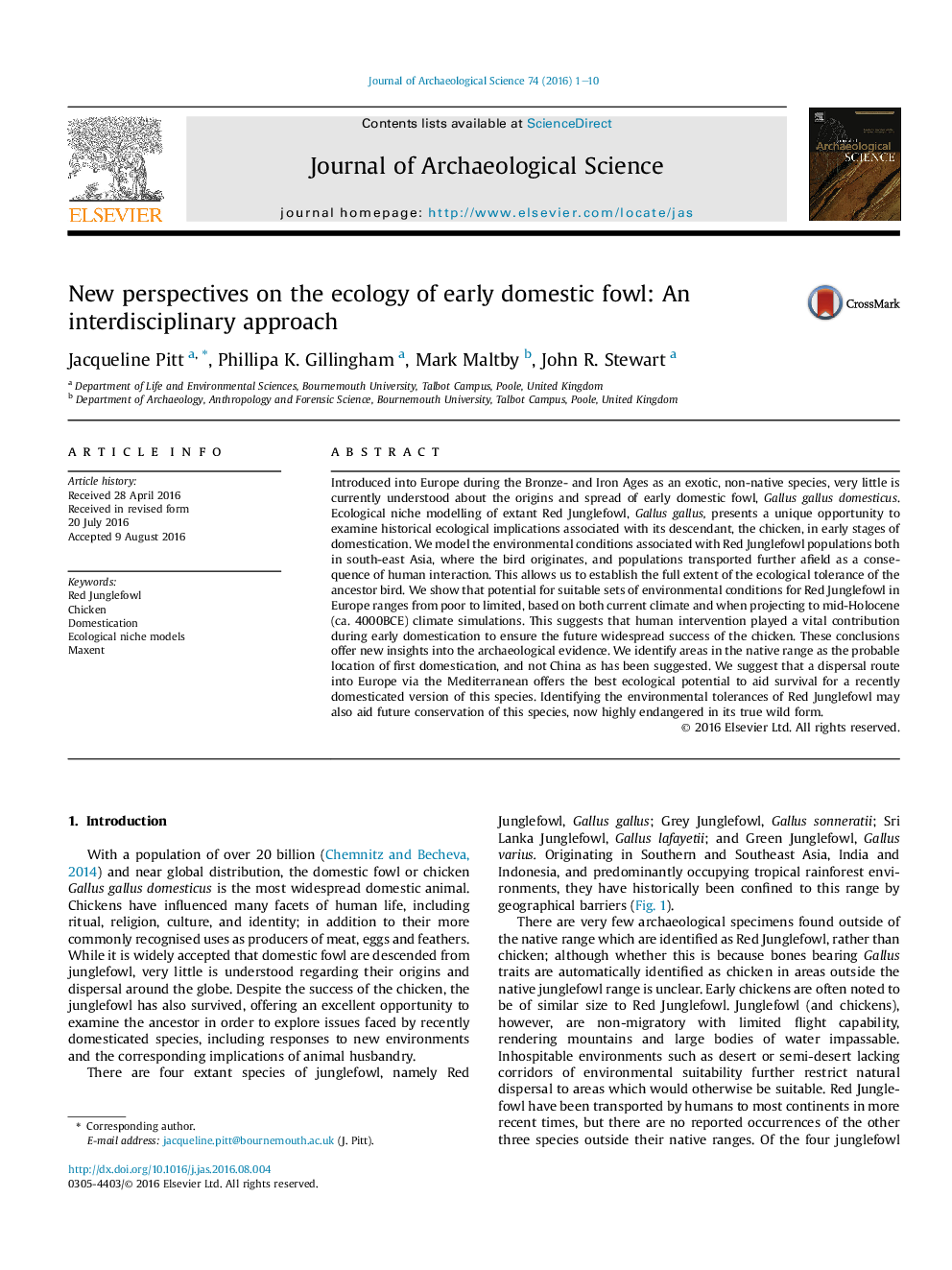| Article ID | Journal | Published Year | Pages | File Type |
|---|---|---|---|---|
| 1035281 | Journal of Archaeological Science | 2016 | 10 Pages |
•Environmental conditions in Europe are unsuitable for Red Junglefowl.•Domestication is most likely to have occurred in the native range.•The earliest known chicken bones are unlikely to represent first domestication.
Introduced into Europe during the Bronze- and Iron Ages as an exotic, non-native species, very little is currently understood about the origins and spread of early domestic fowl, Gallus gallus domesticus. Ecological niche modelling of extant Red Junglefowl, Gallus gallus, presents a unique opportunity to examine historical ecological implications associated with its descendant, the chicken, in early stages of domestication. We model the environmental conditions associated with Red Junglefowl populations both in south-east Asia, where the bird originates, and populations transported further afield as a consequence of human interaction. This allows us to establish the full extent of the ecological tolerance of the ancestor bird. We show that potential for suitable sets of environmental conditions for Red Junglefowl in Europe ranges from poor to limited, based on both current climate and when projecting to mid-Holocene (ca. 4000BCE) climate simulations. This suggests that human intervention played a vital contribution during early domestication to ensure the future widespread success of the chicken. These conclusions offer new insights into the archaeological evidence. We identify areas in the native range as the probable location of first domestication, and not China as has been suggested. We suggest that a dispersal route into Europe via the Mediterranean offers the best ecological potential to aid survival for a recently domesticated version of this species. Identifying the environmental tolerances of Red Junglefowl may also aid future conservation of this species, now highly endangered in its true wild form.
